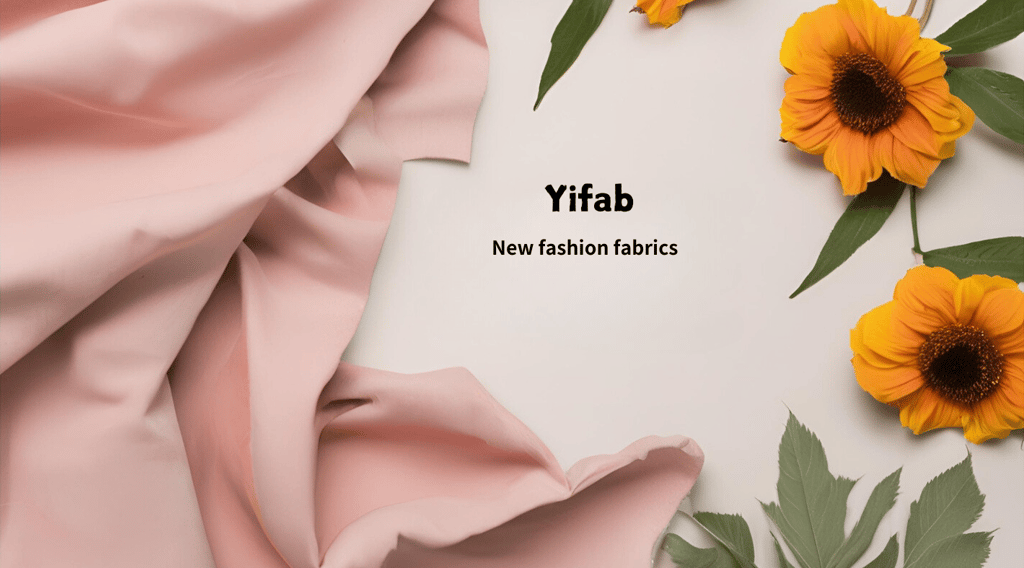3 New Trends of Fashion Fabric
7/2/20244 мин чтение


Sustainable and Eco-Friendly Fabrics
The fashion industry is increasingly embracing sustainable and eco-friendly fabrics, a trend driven by growing environmental awareness and consumer demand for responsible fashion. Key materials leading this movement include organic cotton, bamboo, Tencel, and recycled polyester, each offering unique benefits that contribute to a more sustainable future.
Organic cotton is cultivated without synthetic pesticides or fertilizers, significantly reducing water usage and soil contamination compared to conventional cotton. Bamboo fabric, derived from the fast-growing bamboo plant, is another eco-friendly option. It requires minimal water and pesticides, and its cultivation helps to sequester carbon dioxide, thereby lowering the overall carbon footprint.
Tencel, a brand of lyocell and modal fibers, is produced from sustainable wood sources, primarily eucalyptus, using a closed-loop process that recycles water and solvents. This results in a fabric that is not only soft and breathable but also environmentally responsible. Recycled polyester, made from post-consumer plastic bottles, helps reduce waste and resource consumption, offering a second life to materials that would otherwise contribute to landfill pollution.
Several fashion brands are at the forefront of integrating sustainable fabrics into their collections. For instance, Patagonia utilizes recycled polyester in many of its products, while Stella McCartney is renowned for her commitment to using organic cotton and eco-friendly materials. Similarly, Eileen Fisher emphasizes sustainable practices by incorporating Tencel and other eco-conscious fabrics in her designs.
Consumers looking to support sustainable fashion can start by checking labels for certifications such as GOTS (Global Organic Textile Standard) for organic cotton, OEKO-TEX for chemical safety, and the FSC (Forest Stewardship Council) certification for wood-based fibers like Tencel. Additionally, choosing brands that prioritize transparency and sustainability in their production processes can further ensure that their purchases align with eco-friendly values.
Smart and Technologically Enhanced Textiles
The integration of technology into textiles represents a significant evolution in the fashion industry. Smart textiles, also known as e-textiles, are fabrics that have been embedded with electronic components to enhance their functionality. These innovations are not only transforming the aesthetic appeal of clothing but also redefining its utility. One of the most groundbreaking developments in this sphere is the creation of fabrics with embedded sensors. These sensors can monitor various health metrics such as heart rate, temperature, and even hydration levels, providing real-time data that can be crucial for both everyday wearers and professionals in specific fields.
An example of this technology in action is sportswear designed to optimize performance and recovery. Athletes can now wear garments that track their physiological parameters, allowing for more tailored and efficient training regimens. Similarly, in the healthcare sector, smart textiles are being used to monitor patients' vital signs remotely, enabling better management of chronic conditions and reducing the need for frequent hospital visits.
Another fascinating advancement is temperature-regulating materials. These fabrics can adapt to the wearer's body temperature and environmental conditions, providing optimal comfort in various climates. This technology is particularly beneficial for outdoor enthusiasts and individuals who work in extreme weather conditions, offering them a more adaptive and comfortable experience.
Self-cleaning fabrics are also making waves in the fashion industry. These textiles are treated with nanotechnology to repel water, dirt, and bacteria, significantly reducing the need for frequent washing and enhancing the longevity of the garments. This not only offers convenience but also aligns with growing environmental concerns by reducing water and detergent usage.
The current applications of smart textiles are just the beginning. As technology continues to advance, we can expect even more innovative uses in everyday fashion, from clothing that charges your devices to fabrics that change color based on your mood. These developments are poised to revolutionize the way we think about clothing, blending fashion with functionality in unprecedented ways.
Bold Patterns and Vibrant Colors
The fashion landscape is currently experiencing a dynamic shift toward bold patterns and vibrant colors, marking a departure from the subdued palettes of previous seasons. Designers are embracing eye-catching prints to make a statement in their collections. From geometric shapes that invoke a sense of modernity to timeless florals that add a touch of elegance, the diversity in patterns is remarkable. This trend isn't just limited to the runway; it has permeated various fashion styles and age groups, highlighting a universal appeal.
One notable resurgence is that of tie-dye, a pattern once synonymous with 1960s counterculture. Today, it has been reinvented with fresh color schemes and innovative techniques, making it a favorite among both younger and older demographics. Similarly, animal prints have made a comeback, offering a versatile option that can be both bold and sophisticated. Whether it's leopard spots, zebra stripes, or snake patterns, these prints add an exotic touch to any outfit.
Incorporating bold patterns and vibrant colors into everyday attire may seem daunting, but a few tips can make the process easier. Start with a statement piece, such as a boldly patterned jacket or a brightly colored scarf, and build your outfit around it. Balance is key; pairing vibrant prints with neutral tones can create a harmonious look. For those who prefer a more understated approach, accessories like handbags or shoes can add a pop of color without overwhelming the outfit.
Recent runways have showcased several popular pattern trends. Geometric prints, with their clean lines and structured forms, offer a modern twist on classic designs. Florals, on the other hand, continue to be a favorite, with designers experimenting with scale and color to create fresh interpretations. Abstract patterns and mixed prints are also gaining traction, reflecting a growing interest in individuality and self-expression through fashion.
